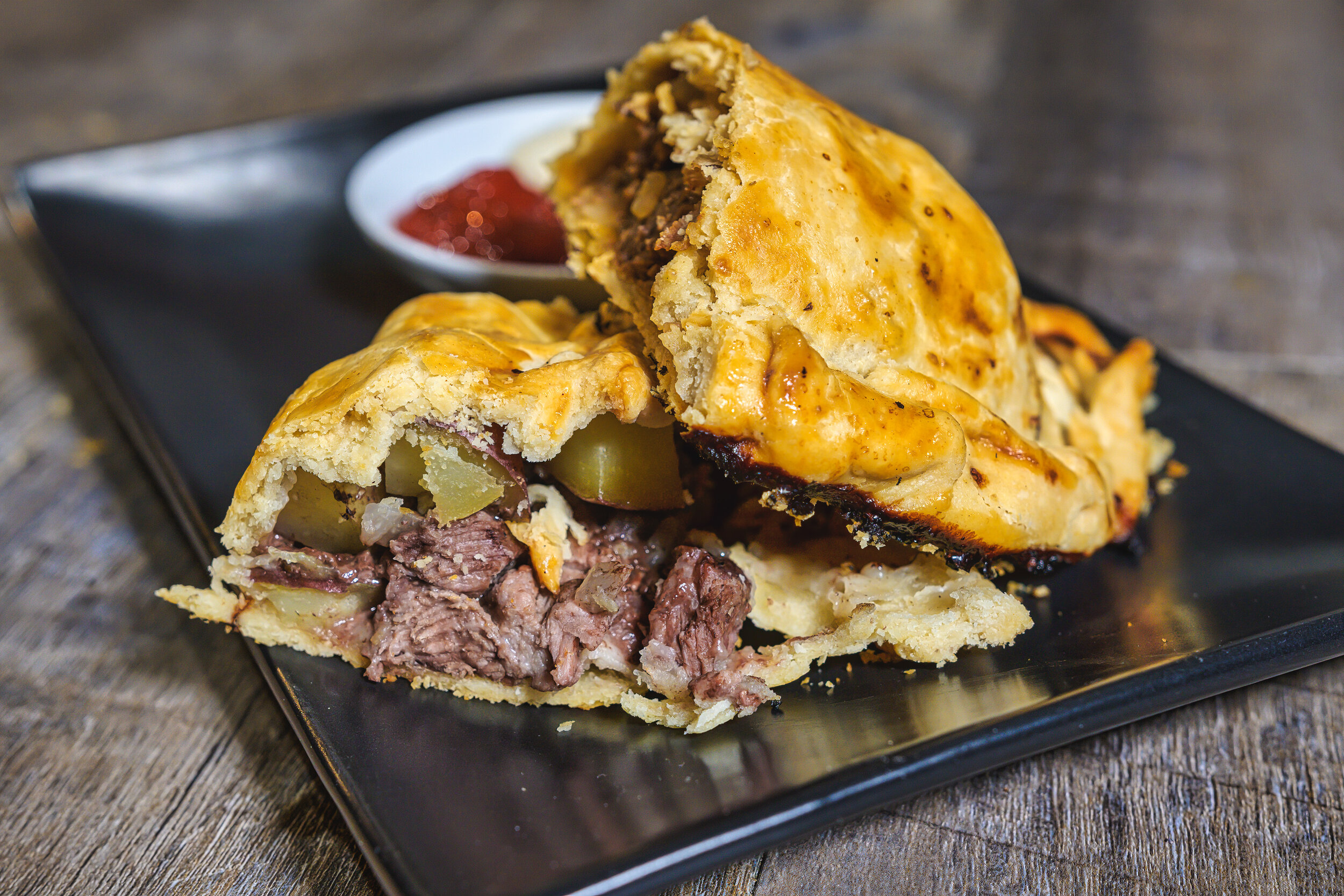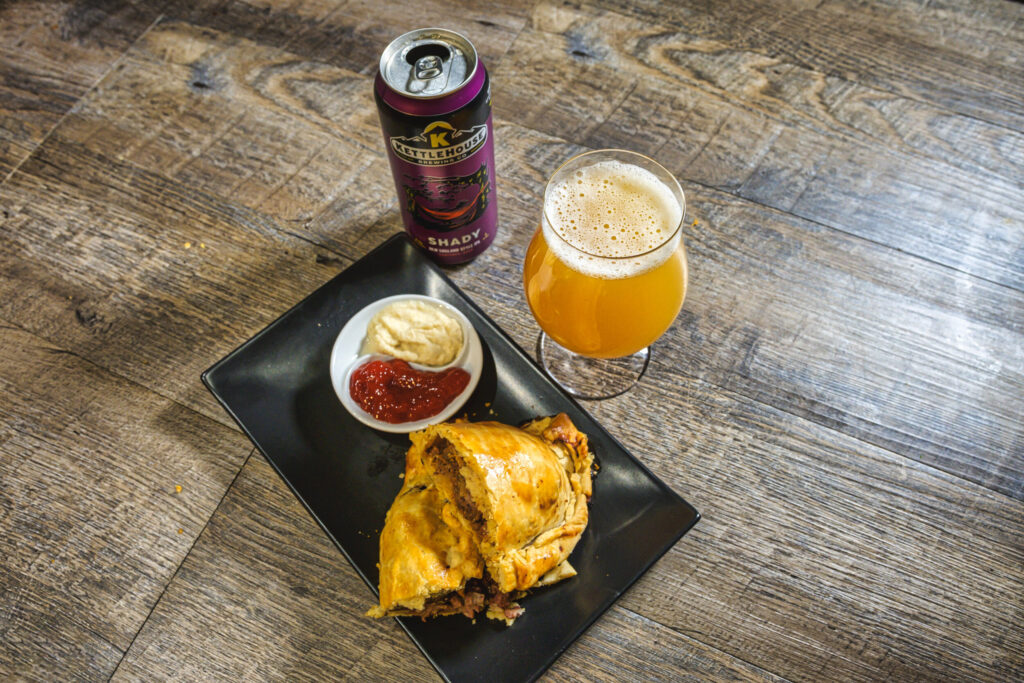“The traditional ingredients of the ‘oggie’, as it is called in the old Cornish language, are naturally disputed, but on some things most experts agree: the meat must be chopped, not minced, the vegetables (perhaps potato, onion and turnip) must be sliced and the ingredients are not pre-cooked before they are put in the pastry.”
— Janet Clarkson, Pie: A Global History
In the USA the term “pasty” (rhymes with “hasty”) is more associated with a nipple cover than food. In Michigan and Montana, however, everyone is familiar with pasty (PASS-tee), knows how it is pronounced, how it tastes, and is well aware of its significance.
Known mostly as “Irish Butte” Pasties in Montana, this is a simple, delicious, and savory food comprised of half-moon-shaped shells stuffed with meats and vegetables where the whole bundle is then cooked over the fire – the “proper” and the oldest technique of cooking pasties. In the old days, they weighed about two pounds each but in modern times they are a lot less small.
To help with the visual imagery, just imagine a calzone with a baked-in history.
Pasty’s heritage is linked to the early 1800s rush to mine gold, tin, and copper deposits in Montana.
Early Irish Catholic Priests created pasties to transport food and sustenance as they walked about the countryside preaching and aiding people. Cornish miners preferred them because they were portable and filled with much-needed sustenance. So naturally with the incursion of Irish and Cornish immigrants during the gold rush, the pasty was introduced to our state.
Miners used their shovels to reheat the pasties over the candles they wore on their heads. Some held it by its solid ridge specifically designed for grasping, once the inner parts were consumed, the ridge was tossed about with the intention of keeping the ghost of dead miners satisfied. Hungry ghosts must not have been friendly ghosts. Incidentally, handling the pasty by its ridge lowered the risk of getting sick from dirty working hands.
In 1864 Finnish immigrants took cues from the Cornish miners and homesteaders and adopted the pasty as their own giving birth to the misconception that the dish is Finnish. Wrong.
This easy and unadorned history of pasty parallels its flavor, as the food itself is rarely seasoned with anything other than salt and pepper. In Butte, it may be served with a side of gravy or ketchup, but that’s about it. Bold and exotic is not the point of pasty.
Much like the Montanans who partake in eating pasties, this heritage meal has its strength in practicality, modesty, and tenacity without much self-aggrandization, which inadvertently encouraged us to share and highlight this recipe, not to aggrandize but to pay homage to our Montana heritage.
Follow this recipe to taste Montana’s history.

The Kettle House Brewing Company’s Shady, a New England Style Hazy IPA has a combination of fruit-forward hops to impart fruity, tropical, and citrus notes and a soft, round mouthfeel that contrasts nicely with the hearty pasties. No bitterness, no pucker.
